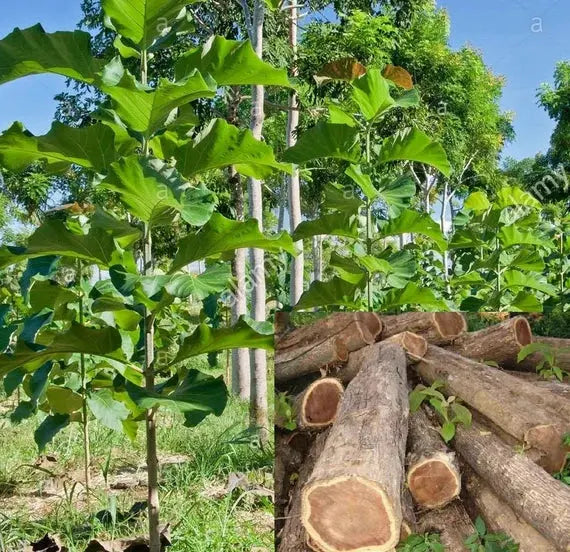Teakwood Tree Seeds refer to the seeds of the Teak Tree (Tectona grandis), a tropical hardwood tree renowned for its high-quality timber. Teakwood is highly valued in the furniture and construction industries due to its durability, resistance to pests, and attractive appearance. Here’s a detailed guide to Teakwood tree seeds, including their characteristics, benefits, and planting care:
Characteristics
-
Appearance:
- Seeds: Teak seeds are small, oval, and brown or grayish in color. They have a hard, woody outer shell.
- Fruit: The tree produces a small, woody fruit known as a drupe, which contains the seeds. The fruit is typically about 1 inch (2.5 cm) in diameter.
-
Tree Size:
- Height: Teak trees can grow up to 100-130 feet (30-40 meters) tall in optimal conditions.
- Canopy: They have a broad, dense canopy with large, ovate leaves.
Benefits
-
Timber:
- Durability: Teakwood is highly prized for its durability, resistance to rot, and natural oils that make it resistant to insects and termites.
- Uses: Commonly used in high-quality furniture, flooring, and construction, including outdoor applications like decking and boat building.
-
Ecological Benefits:
- Soil Improvement: Teak trees can improve soil quality and prevent erosion with their extensive root system.
- Habitat: Provides habitat and food for various wildlife species.
-
Economic Value:
- Forestry: Teakwood is a significant commercial crop in many tropical countries, contributing to the economy through timber production.
Planting Teakwood Tree Seeds
-
Preparation:
- Seed Treatment: Teak seeds have a hard outer shell that may require scarification to improve germination. This can be done by lightly sanding or filing the seed coat. Alternatively, soaking the seeds in water for 24-48 hours before planting can help.
-
Timing:
- Optimal Season: Plant seeds in the spring or early summer when temperatures are warm and conditions are favorable for germination.
-
Soil and Location:
- Soil Type: Prefers well-drained, loamy soil but can adapt to a range of soil types, including sandy and clay soils. Ensure the soil has good drainage.
- Location: Choose a sunny location with full sun exposure. Teak trees thrive in tropical and subtropical climates.
-
Planting:
- Sowing Seeds: Plant seeds about 1-2 inches (2.5-5 cm) deep in the soil. Space seeds or seedlings about 10-15 feet (3-4.5 meters) apart to accommodate mature tree size.
- Germination: Seeds typically germinate within 4-8 weeks. Keep the soil consistently moist during this period.
-
Watering:
- Initial Care: Water regularly to keep the soil moist but not waterlogged until the seedlings are established.
- Ongoing Care: Once established, teak trees are drought-tolerant but will benefit from regular watering during dry periods.
-
Fertilizing:
- Nutrients: Fertilize with a balanced fertilizer during the growing season to promote healthy growth. Teak trees generally benefit from regular feeding to support vigorous growth.
Care and Maintenance
-
Pruning:
- Trimming: Prune young trees to shape them and remove any dead or damaged branches. Regular pruning helps maintain the tree’s structure and health.
-
Pest and Disease Management:
- Monitoring: Teak trees are relatively resistant to pests and diseases. However, monitor for issues such as fungal infections or pest infestations.
- Control: Use appropriate treatments if problems arise, following local guidelines.
-
Protection:
- Young Trees: Protect young trees from extreme weather conditions and pests until they are well-established.
Environmental Considerations
- Invasiveness: Teak trees are generally not invasive but can spread aggressively in certain conditions. Monitor their growth to ensure they do not outcompete native vegetation.
Summary
Teakwood Tree Seeds (Tectona grandis) offer significant benefits, including high-quality timber for construction and furniture, ecological advantages, and economic value in forestry. Proper planting and care can lead to successful growth and contribute to a valuable and sustainable resource. Whether you're planting teak trees for timber production or for their ecological benefits, following these guidelines will help ensure healthy growth and productivity.






